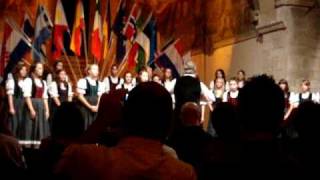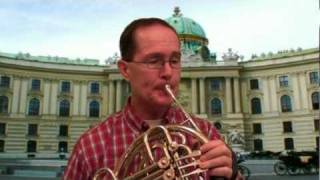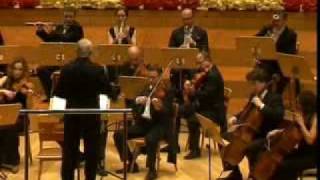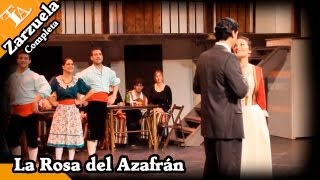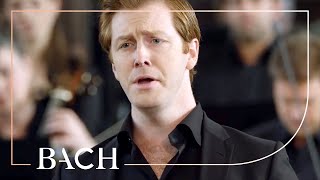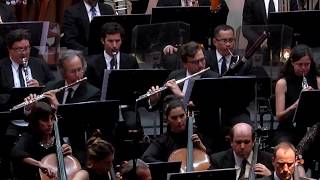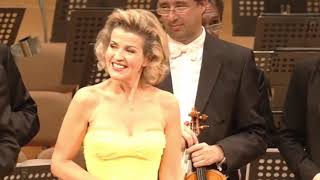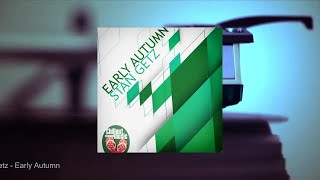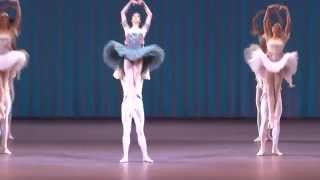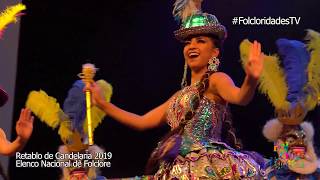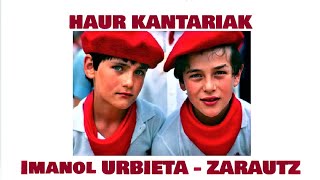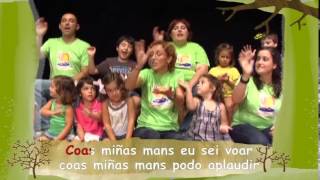Palm Sunday is celebrated on April 13th.
April 14, Republic Day
Recommended music videos for initiation to classical music
Giovanni Pierluigi da Palestrina (1525–1594) was an Italian Renaissance composer of sacred music and the best known representative of the 16th-century Roman school of musical composition. He had a lasting influence on the development of both ecclesiastical and secular music in Europe , especially in the development of counterpoint, and his work is considered the culmination of Renaissance polyphony. Palestrina is seen as the most representative composer of polyphonic works adapted to the new demands of the Counter-Reformation. His works of those years are notable for their clarity, leaving the melody in the hands of the upper voice and precisely adjusting the rhythm of the speech. He is considered one of the most eminent composers of sacred music.
His musical output is almost entirely composed of polyphonic pieces of a sacred character, intended to accompany the Catholic liturgy. The exception is a certain number of secular madrigals . Of his nearly 500 motets, the most famous, in addition to the Improperia , are the 29 based on the text of the Song of Solomon . Of his 105 masses, the most notable is the Mass of Pope Marcellus , in which he achieves a synthesis of the style of his predecessors and contemporaries.
The Motet (from the French motet, and this from mot: 'word, nickname') is a polyphonic composition born in the 13th century to be sung in churches with commonly biblical themes. These were songs for religious worship with 4 voices in Latin and " a cappella " (without instruments). Until the 17th century it was one of the most important musical forms of polyphonic music and from the Baroque period (1600-1750) the word motet was also applied to sacred compositions written for one or more voices with instrumental accompaniment.
Pueri Haebreorum is a motet for four equal voices whose music was written by Palestrina to be performed in the religious liturgy of Palm Sunday "The children of the Hebrews, carrying olive branches, went out to meet the Lord, acclaiming and saying: Hosanna in the highest!"
Today it is offered to us by the Severacek women's choir from the Czech city of Liberec , conducted by maestro Silvie Palkova .
Wolfgang Amadeus Mozart (1756-1791) is considered one of the three giants of musical composition, along with Bach and Beethoven . A child prodigy born in Salzburg , Austria, he mastered the keyboard and violin at the age of six and began composing. His father, Leopold , exhibited him on exhausting tours of various European courts. A prolific composer (more than 600 works written between the age of five and his death), he cultivated all kinds of musical genres: piano works, chamber music, symphonies, concertante works, choral works, operas... each and every one of them a masterpiece of their kind. His operas The Magic Flute, Don Giovanni, Così fan Tutte, and The Marriage of Figaro are among the 10 most performed operas in the world. He died in Vienna at the age of 35.
The catalogue of Mozart's works or Köchel Catalogue ( Köchel Verzeichnis, in German) was created by Ludwig von Köchel in 1862 and lists the musical works composed by Wolfgang Amadeus Mozart . Each of Mozart 's works is designated by a number preceded by the abbreviation K. or KV ; this number designates the chronological order of its creation and which is actually valid for most of the works; however, in its first edition, works by other authors appear erroneously attributed to Mozart , and other authentic works that had not yet been discovered are omitted.
Horn Concerto No. 1 in D major, K. (412+514)/386b, by Wolfgang Amadeus Mozart. Written in 1791, the work is in two movements. It is the only one of Mozart 's four horn concertos in D major (the rest are in E flat major ) and the only one with only two movements instead of the usual three. Although numbered first, it was actually the last of the four concertos to be completed.
Sarah Willis (1969) is an American horn player who grew up in Maryland, Tokyo, Boston, Moscow and London . She began playing the horn at age 14; at 22, she joined the Berlin State Opera and at 32, the Berlin Philharmonic, where she continues to perform today. In 2017, she traveled to Cuba for the first time to teach a horn master class, at which time she was captivated by the overflowing musicality of its inhabitants and the high technical preparation of its musicians. She returned on three more occasions to teach as many master classes; from this coexistence with Cuban musicians emerged Mozart and Mambo , which is a musical selection that combines Mozart horn concertos with traditional Cuban music. The album was released in 2020.
Taken from that album, today we offer the First Movement with Sara Willis accompanied by the Havana Lyceum Orchestra.
Himno de Riego is the name given to the anthem sung by the flying column of Lieutenant Colonel Rafael del Riego after his insurrection against the King of Spain Ferdinand VII on January 1, 1820 in Las Cabezas de San Juan (province of Seville), whose text is by Evaristo Fernández de San Miguel and music of unknown author, although some versions attribute its authorship to José Melchor Gomis . It was used as the national anthem of Spain during the Liberal Triennium (1820-1823), the First Republic (1873-1874) and the Second Republic (1931-1939), which even in exile maintained its use until its own dissolution.
The version we present today is offered by the Prague International Orchestra .
Jacinto Guerrero (1895-1951) was a Spanish musician and composer of zarzuelas born in Ajofrín (Toledo) into a humble family whose father, Avelino Guerrero Cruz , was the sacristan and director of the band in his town where little Jacinto played the bass drum and cymbals at just 6 years old. In 1914 he composed his first work written for band, which brought him enormous success and fame, Himno a Toledo . Thanks to this, he obtained a scholarship from the Provincial Council and the City Council to enter the Madrid Conservatory . In 1948, he became president of the SGAE , which led him, a year later, to travel to Brussels, Paris, Lisbon and New York ; in September of that same year, he died in the Rúber sanatorium in Madrid.
The Saffron Rose is a zarzuela in two acts, a free adaptation of Felix Lope de Vega 's comedy The Dog in the Manger , with music by Jacinto Guerrero , and premiered on March 14, 1930 at the Teatro Calderón in Madrid . The librettists were Federico Romero Sarachaga and Guillermo Fernández-Shaw Iturralde , a duo that had previously collaborated with Amadeo Vives . The action, which takes place in La Mancha, Spain, tells the story of a poor farmer in love with a young woman who works on her mistress's farm, from whom he asks permission to go out with the young woman. The version we offer today is conducted by the Malaga-born maestro Arturo Díez Boscovcih .
Recommended classical music videos
Johann Sebastian Bach (1685-1750) was a German violinist, organist, conductor, and composer. He was born in Eisenach into the most prominent musical family in history, with more than 30 famous composers. In 1703, he obtained his first job as court musician to the Prince of Arndstat and in 1707 moved to Mülhausen as organist, where he married his cousin Maria Barbara, with whom he had seven children. After his wife's death in 1720, he remarried after a year and a half to Maria Magdalena, with whom he would have another thirteen children. In 1723, he moved to Leipzig , where he would reside until his death at the age of 65. A prolific composer, he is considered one of the three greatest geniuses in the history of music, along with Mozart and Beethoven.
The Catalogue of Bach's Works, or Bach-Werke-Verzeichnis , better known by its acronym BWV , consists of a numbered index of all the composer's works, arranged thematically by type of work, genre, and whether vocal or instrumental. It is used by scholars and musicians worldwide. The catalogue was created in 1950 by the German musicologist Wolfgang Schmieder .
The St Matthew Passion is an oratorio written by Johann Sebastian Bach for solo voices, double choir and double orchestra. It presents the suffering and death of Christ according to the Gospel of St. Matthew and is the composer's longest work, although it is divided into two large parts, between which the sermon took place. The narration of the text is sung literally by an Evangelist , the rest of the characters in the plot ( Christ, Judas, Peter , etc.) are embodied by different soloists, the biblical text is set to music in recitatives , while the ariosos and arias present new texts that give a more intimate character to the life of Christ .
The version we present today is offered by the Dutch Bach Society, led by the also Dutch maestro Josephus van Veldhoven (1952).
Giovanni Battista Viotti (1755–1824) was an Italian violinist, composer, and teacher. The son of an instrumentalist, Viotti took his first lessons from his father, who played the French horn. Appreciated as a violinist from a very young age, he was taken under the protection of the Prince and Princess of Dal Pozo della Cisterna who arranged for him to study with Antonio Celoniat . In 1782 he was appointed soloist at the court of Marie Antoinette ; he later went on to dedicate himself to teaching, composing, and organizing concerts, and in 1794 he was appointed artistic director and conductor at the King's Theatre in London ; four years later he returned to Paris , and three years after that he returned to London where he died in 1824.
During the last 20 years of the 18th century, he was considered the best violinist in Europe ; as a composer, he was a defender of the Italian instrumental tradition of the Rococo period , but open to Romanticism.
La Marseillaise ("La Marseillaise") has been the official national anthem of France since 14 July 1795. The anthem, originally titled Chant de guerre pour l'armée du Rhin ("War Song for the Army of the Rhine"), was written in 1792 by Claude Joseph Rouget de Lisle , captain of engineers at the Strasbourg garrison, as a patriotic song for revolutionary France in its war against Austria. Parisians welcomed it with great enthusiasm and renamed it La Marseillaise . It was banned during the Empire and the Restoration , and was made official again during the Third Republic . During 1940-1945 it was banned again, and its singing was considered a symbol of resistance to the German occupation and the collaborationist Vichy regime.
Today we offer Viotti 's Tema e variazioni in C maggiore , a set of themes and variations on La Marseillaise performed by the Camerata Ducale with Maestro Guido Rimonda as soloist and conductor.
Nadia Boulanger (Paris 1887- 1979) was a French composer, pianist, conductor, intellectual and teacher who trained and taught many of the great composers of the 20th century . According to composer Ned Rorem , "she was the most important musical pedagogue who ever existed." Daughter of the composer Ernest Boulanger and his wife Raissa , at a very young age she won the Grand Prix de Rome , the highest distinction that a musician could receive. She studied with Gabriel Fauré and Charles-Marie Widor and at the beginning of her career she gave classes in elementary piano and piano accompaniment; later, in harmony, counterpoint, fugue and organ. It is estimated that she had more than 1,200 students, among which stand out Copland, Menotti, Bernstein, Glass, Narcís Bonet and Astor Piazzolla.
Today we offer his Fantasia piano and orchestra in a version by the eminent French pianist based in Argentina, Anaïs Crestin , accompanied by the Salta Symphony Orchestra , all conducted by its principal conductor, Maestro Noam Zur.
Tōru Takemitsu (1930 - 1996) was a composer and performer known for his exploration of the principles of musical composition inherent to Western classical music and the Japanese musical tradition, both separately and in combination; he is considered an influential figure in the music of his country, who also gained wide recognition and diffusion in the West . He was essentially self-taught in music, although highly influenced by French classical music, particularly that of Claude Debussy and Olivier Messiaen ; this did not prevent him from incorporating Japanese instruments into the orchestra, such as the shakuhachi (a type of bamboo flute) or the biwa (a type of Japanese lute).
Takemitsu first came to the attention of a wide audience with his Requiem for String Orchestra (1957), which was praised by Igor Stravinsky . Takemitsu 's work includes solo piano pieces, chamber music, orchestral music, electroacoustic music, and nearly one hundred film scores. During his career, he received 17 awards, including those from the Japan Film Academy (in 1978, 1979, 1986, 1987, 1990, and 1996), the Grawemeyer Award for composition (1994), and, posthumously, the 4th Glenn Gould Prize (1996).
Nostalgia. The piece's name derives from Andrei Tarkovsky 's film of the same name, a tribute to the director who passed away shortly after his untimely death. Similar to the Italian-Soviet film, the piece contains themes of aspiration: unlike many languages, the word "nostalgia" in Russian and Italian describes the longing for a place or a person, rather than the reminiscence of a time gone by. The string orchestra paints shimmering images of water and fog while the solo violin sways plaintively above. Together, the instruments embody an unapologetic nature, a cold and ambiguous tone creating an unshakeable sense of loneliness. (Excerpted from Schott 's article)
Today we bring it to you by Anne-Sophie Mutter with the Vienna Philharmonic Orchestra conducted by Maestro Seiji Ozawa .
Recommended music videos for all tastes
Stan Getz (1927-1991) was an American jazz tenor saxophonist, widely considered one of the most important in the history of jazz . At the age of fifteen, he made his professional debut with Dick Rogers ' orchestra and until 1946 he played successively in nine big bands , including Benny Goodman 's, with which he recorded his first solos. At nineteen, he traveled to Los Angeles and in December 1948 recorded his landmark album Early Autumn ; overnight, his name became widely known and he earned the nickname The Sound due to his warm, lyrical tone. In the 1960s, Getz became very fond of Brazilian bossa nova music, collaborating with composer Antonio Carlos Jobim , guitarist João Gilberto and his wife, singer Astrud Gilberto , and winning several Grammys.
"Ay Carmela" is a song originally composed in the early 19th century and performed by Spanish soldiers fighting against the French invasion during the Peninsular War (1808–1814). It was later revived under various names by Republican soldiers as one of the songs of the Spanish Civil War (1936–1939). The melody was also used by the Francoist faction, specifically by the Falangists and Requetés, under the name " Por el río Nervión ."
Berri Txarrak ( Bad News ) was a Basque rock band whose songs are sung in Basque. It was founded in 1994 in Lekumberri (Nafarroa/Navarra) by Gorka Urbizu and Aitor Goikoetxea . The band would later be composed of Gorka Urbizu as vocalist and guitarist, Galder Izagirre on drums and David González as bassist. It is one of the most recognized groups within the Basque music scene at an international scale, already having published more than a dozen albums throughout more than 20 years of history. In December 2018 they announced that at the end of their next tour ( Ikusi Arte Tour 2019 ) they would take an indefinite hiatus.
Natalia Lafourcade (Mexico City, 1984). Recognized as the first Ambassador of Music for Peace , Natalia Lafourcade 's voice, an ode to love, freedom and life, has crossed the borders of her country to move and inspire generations of all ages around the world with her lyrics. Her music, a fusion of multiple genres that mixes notes of pop , jazz and cumbia with son jarocho , chords from her native Veracruz that she rescues in honor of her roots, but also melodies from other territories such as bolero or bossa nova , has made her one of the most fascinating personalities in Latin American folklore. A four-time Grammy Award winner and seventeen-time Latin Grammy Award winner, Natalia has participated in numerous musical projects over her more than 20-year career, establishing herself as one of the most important, versatile, and acclaimed contemporary Spanish-language singer-songwriters. In addition to her acclaimed songwriting and singing talent, her philanthropic and activist role in preserving Mexico's ancestral origins and customs has distinguished her as a guardian of Mexico 's cultural memory. (Excerpt from the commentary at the bottom of this video)
Recommended peculiar videos
Aram Khachaturian (1903-1978) was an Armenian composer under the Soviet regime. At the age of 16, he entered the Moscow Conservatory to study with Nikolai Myaskovsky , among other teachers, and at 22, he began writing for piano and chamber music. Later, he would delve into the production of orchestral, theater, film, and ballet music, among which the ballet Spartacus , which we offer today, and the ballet Gayane , to which the well-known Sabre Dance belongs, stand out. Despite holding important positions, his work was dismissed as “anti-people” during the Stalin era. His music is clear, agile, and vibrant, and the Armenian folk music to which he always felt attracted can be felt in his works. In Armenia, he is considered its main composer.
Spartacus is a ballet in three acts and ten scenes based on Raffaello Giovagnoli 's novella about the life of Spartacus , composed by Aram Khachaturian ; it narrates the exploits of Spartacus , the leader of a slave revolt against the Roman Republic , known as the Third Servile War , taking liberties typical of the aforementioned novel, far from documented historical facts. It premiered on 27 December 19562 with modest success due to the fact that the choreography abandoned the traditional use of pointe shoes in classical ballet. Spartacus , however, won the Lenin Prize for the Arts in 1959. Today, it remains one of Khachaturian 's best-known compositions and is a regular feature in the repertoire of Russian ballet companies.
Today it is brought to us by the Bolshoi Theatre Ballet Company .
Aleksandr Glazunov (1865-1936) was a Russian composer, conductor, and influential music teacher. He combined a revival of Russian musical roots with an embrace of Western stylistic influences, which became increasingly prominent in his later works. He was close to the circle of Russian composers of nationalist and folk revival known as the Group of Five . He is considered the last exponent of the Russian national school of composition, founded by Mikhail Glinka .
The Grand Pas is a set of dances that serves as a showpiece for the principal dancers, the demi-soloists, and, in some cases, the corps de ballet. It usually consists of an entrance (introduction), a grand adagio, sometimes a dance for the corps de ballet, optional variations (solo dances) for the demi-soloists, variations for the principal dancer or the male dancer, or both, and a coda (sometimes called a coda générale or grand coda), which concludes the suite.
Raymonda is a ballet in three acts, with music by Aleksandr Glazunov and choreography by Marius Petipa , premiered at the Mariinsky Theatre in St. Petersburg on January 19, 1898. The work narrates the vicissitudes of a crusading prince and an abominable Saracen in their struggle for the love of Raymonda .
Today we offer the Grand Pas del Ballet in performance by Ekaterina Krysanova, V. Svortok and the Bolshoi Ballet .
Retablo is a stage format that has six versions with different themes, such as: De Marineras, Afroperuano, Symphonic, De Candelaria, Carnivals, and the latest, yet to be released: Retablo de Amazonía.
Altarpiece of the Candelaria. The Festival of the Virgin of Candelaria in Puno, Peru, is a cultural event declared Intangible Cultural Heritage of Humanity by UNESCO on November 27, 2014. The festival represents the largest cultural, musical, dance, and religious event in Peru , thanks to the wealth of symbols and artistic and cultural manifestations of the Quechua, Aymara , and mestizo cultures. The festival takes place in February of each year. This festival features the following moments: rehearsals, novenas, festive albs, the entrance of candles, the entrance of k'apos, vespers, February 2, octave, veneration, cacharpari.
The core of the festival is the religious, festive and cultural expression such as dance, music, arts and various customs and expressions, organized by the Regional Federation of Folklore and Culture of Puno , which brings together the presence of more than 180 groups, including "dances" from Bolivia and from the communities and groups of Puno and the Peruvian Andes , and dance groups organized in the different neighborhoods of the city of Puno , mostly called "dances with costumes of lights", where 100,000 dancers and about 10,000 musicians participate directly, adding their indirect participation about 35,000 more people including directors, alferados (preste), embroiderers, artisans in the making of masks, boots and shoes, bells and other elements.
Today we offer a small sample of the festival.
The biwa is a Japanese plucked instrument similar to the Western lute. It originated in China , where it was exported to Japan around 730. It consists of a sound box, a fretted neck, and five strings plucked with a large plectrum. Wandering biwa players, similar to troubadours, were known as biwa hoshi .
Recommended music videos for children
Various Wikipedia articles have been used to write these texts.
The texts of Videomusicalis are written in Basque, Spanish and English.





